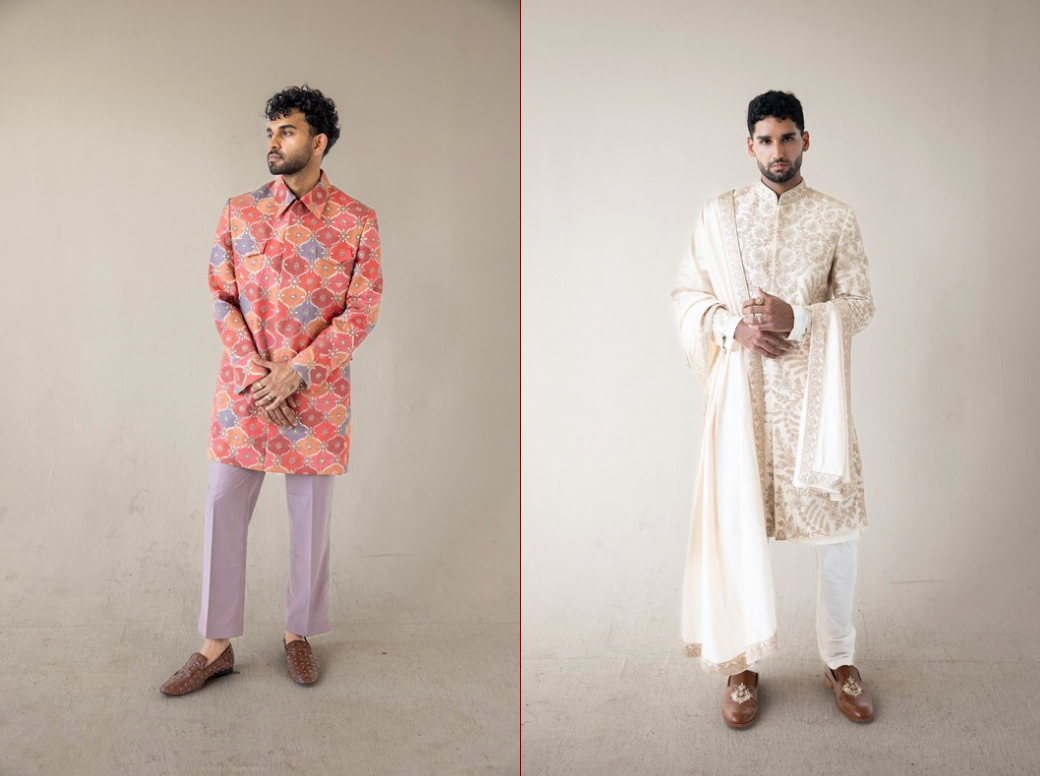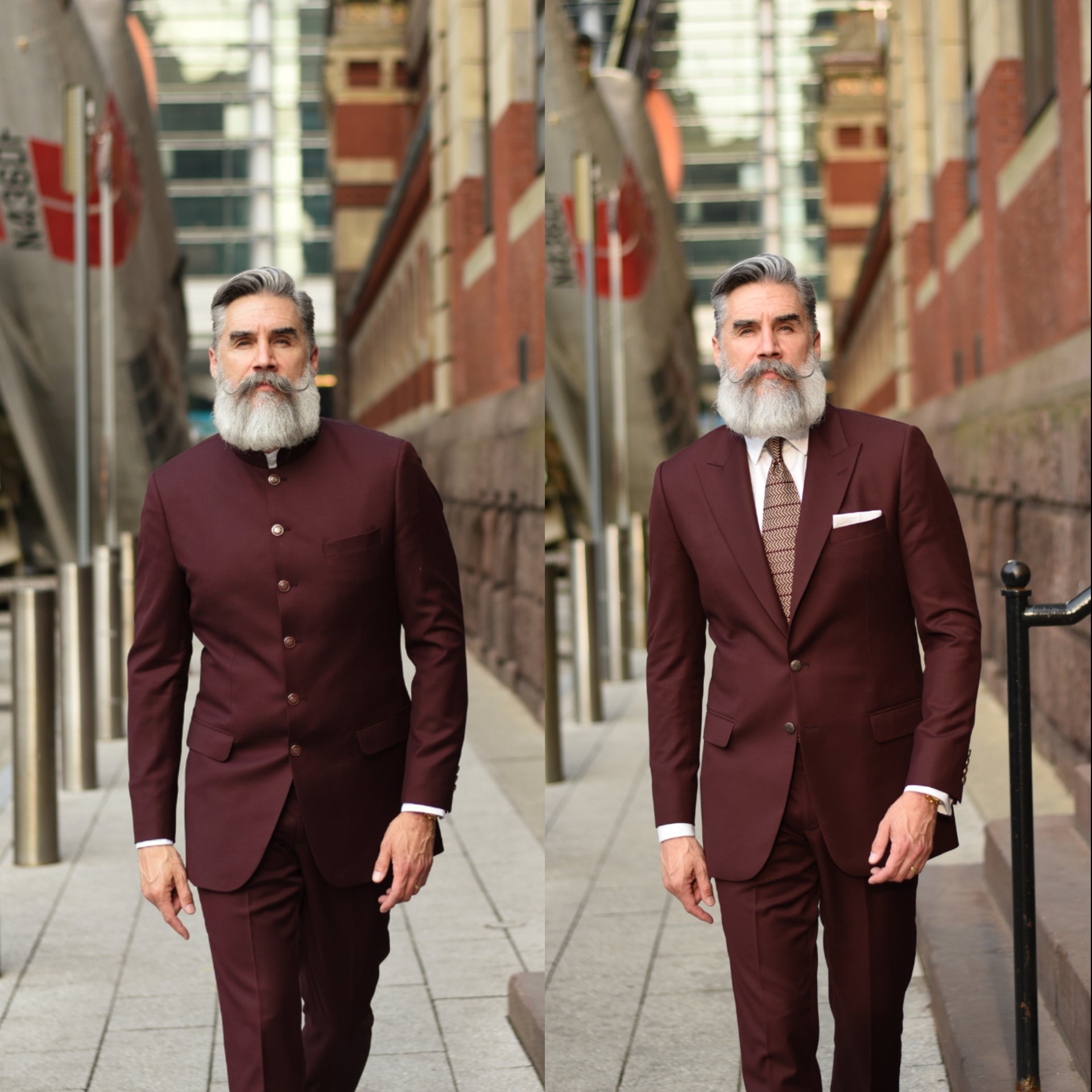
Kurta vs Sherwani: What’s the Difference?
A kurta is a lightweight tunic worn with pajamas, churidar, or tailored trousers. It’s relaxed, versatile, and easy to style for pre-wedding events. A sherwani is a structured, long coat worn over trousers, designed for heightened formality and presence. Think of it as the groom’s statement piece.
When to Wear a Kurta
The kurta shines when the moment calls for ease and movement. For haldi or mehndi, breathable fabrics—cotton-silk, fine linen blends, lightweight jacquards—keep you comfortable without sacrificing polish. Add a lightly embroidered waistcoat for shape and a ceremonial feel.
When to Wear a Sherwani
For the ceremony—or any event where you want a regal entrance—a sherwani delivers structure, stature, and detail work that photographs beautifully. Raw silk, Banarasi brocade, and velvet (in cooler months) create depth under warm indoor light.
Sangeet, Ceremony, Reception: A Simple Plan
-
Sangeet: Kurta with embroidered waistcoat or a minimal achkan for a dance-friendly silhouette.
-
Ceremony: Sherwani with considered handwork and a coordinated shawl; align metals (gold vs silver) with buttons and jewelry.
-
Reception: Either transition to a darker sherwani with lighter embroidery or pivot to a tux/sleek suit for a modern contrast.
Fit and Comfort Matter More Than Labels
A kurta should skim the torso, not cling. Sleeve heads must allow full arm lift for garland exchanges and dancing. A sherwani should close without chest pull and hit around mid-knee (proportioned to height); side slits should open easily when you sit. Try everything under lighting similar to your venue—how it moves and photographs is the real test.
Fabrics by Season and Venue
Daytime, outdoor events reward matte or low-sheen textures: cotton-silk, raw silk, silk-linen. Evening interiors favor richer surfaces: brocade, jacquard, velvet. If the climate is warm, keep embroidery thread-dominant (resham, aari); reserve heavier zardozi for cooler spaces and shorter wear windows.
Accessory Strategy (Keep It Cohesive)
Coordinate safa/turban, shawl, juttis/loafers, and jewelry as one story. Echo your partner’s palette without copying it—lift a secondary hue into your shawl border or pocket square. Align metal finishes across buttons, brooch, cufflinks, and shoe hardware.
Kurta vs Sherwani: Cost, Timing, and Customization
Kurtas (and waistcoats) generally offer shorter lead times and lighter alterations. Sherwanis, with handwork and bespoke patterning, require more calendar. If you have eight to twelve weeks, you can pursue custom; tighter timelines are ideal for ready-to-wear refined with precise tailoring.
Indo-Western Options If You Want Both
A minimalist achkan or sherwani jacket over tailored trousers bridges the gap—cultural line on top, modern ease below. For sangeet, consider a statement waistcoat over kurta; for reception, a darker achkan with formal loafers reads evening-ready without the weight of a full ensemble.
Frequently Asked Questions
Is a kurta formal enough for sangeet?
Yes—with a structured waistcoat and refined footwear, it looks intentional and moves well.
Can I wear a sherwani for both ceremony and reception?
Absolutely. Change shawl, footwear, and jewelry—or shift to a deeper color—to reset the mood.
What if I want one look for the whole day?
Choose a refined sherwani in raw silk with tone-on-tone work; remove the shawl and swap to loafers for the evening.
The Rivesse Recommendation
Choose a kurta when the event is about movement, daylight, and ease. Choose a sherwani when the space is grand, the program is formal, or cameras will be close. We’ll test fabrics and colors under venue-like lighting and refine fit so each look feels inevitable.

